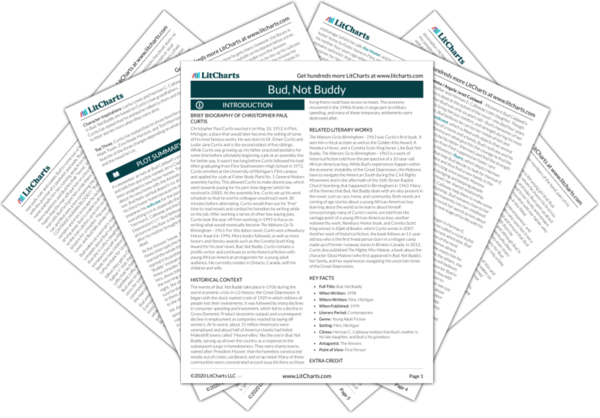The Watsons Go to Birmingham—1963 was Curtis’s first book. It won him critical acclaim as well as the Golden Kite Award, A Newbury Honor, and a Coretta Scott King honor. Like
Bud, Not Buddy,
The Watsons Go to Birmingham—1963 is a work of historical fiction told from the perspective of a 10-year-old African American boy. While Bud’s experiences happen within the economic instability of the Great Depression, the Watsons have to navigate the American South during the Civil Rights Movement and in the aftermath of the 16th Street Baptist Church bombing that happened in Birmingham in 1963. Many of the themes that
Bud, Not Buddy deals with are also present in the novel, such as race, home, and community. Both novels are coming of age stories about a young African American boy learning about the world as he learns about himself. Unsurprisingly many of Curtis’s works are told from the vantage point of a young African American boy; another noteworthy work, Newbury Honor book, and Coretta Scott King winner is
Elijah of Buxton, which Curtis wrote in 2007. Another work of historical fiction, the book follows an 11-year-old boy who is the first freed person born in a refugee camp made up of former runaway slaves in Brixton Canada. In 2012, Curtis also published
The Mighty Miss Malone, a book about the character Deza Malone (who first appeared in
Bud, Not Buddy), her family, and her experiences navigating the uncertain times of the Great Depression.
